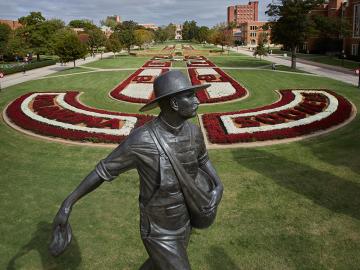Filter News
Area of Research
- (-) Clean Energy (69)
- (-) Materials (15)
- Advanced Manufacturing (7)
- Biology and Environment (37)
- Building Technologies (1)
- Computational Biology (1)
- Computational Engineering (2)
- Computer Science (4)
- Electricity and Smart Grid (1)
- Fusion and Fission (14)
- Fusion Energy (1)
- Isotopes (12)
- Materials for Computing (18)
- Mathematics (1)
- National Security (7)
- Neutron Science (16)
- Nuclear Science and Technology (1)
- Quantum information Science (3)
- Sensors and Controls (1)
- Supercomputing (21)
- Transportation Systems (1)
News Topics
- 3-D Printing/Advanced Manufacturing (24)
- Advanced Reactors (1)
- Artificial Intelligence (2)
- Big Data (3)
- Bioenergy (3)
- Biology (5)
- Biotechnology (1)
- Buildings (11)
- Chemical Sciences (2)
- Clean Water (1)
- Climate Change (4)
- Composites (5)
- Computer Science (6)
- Coronavirus (2)
- Critical Materials (4)
- Cybersecurity (1)
- Decarbonization (5)
- Energy Storage (21)
- Environment (12)
- Frontier (1)
- Fusion (1)
- Grid (8)
- High-Performance Computing (4)
- Isotopes (1)
- ITER (1)
- Materials (22)
- Materials Science (11)
- Mathematics (1)
- Microscopy (5)
- Nanotechnology (7)
- Net Zero (1)
- Neutron Science (5)
- Nuclear Energy (1)
- Physics (1)
- Polymers (3)
- Quantum Computing (1)
- Quantum Science (2)
- Security (1)
- Space Exploration (2)
- Statistics (1)
- Summit (1)
- Sustainable Energy (24)
- Transportation (16)
Media Contacts

ORNL and the University of Oklahoma, known as OU, recently executed a memorandum of understanding to officially recognize their partnership in pursuing shared research and development goals.

ORNL has named three researchers ORNL Corporate Fellows for their significant career accomplishments and continued leadership in their scientific fields.

ORNL's Larry Baylor and Andrew Lupini have been elected fellows of the American Physical Society.

Matthew Ryder has been named an emerging investigator by the American Chemical Society journal Crystal Growth and Design. The ACS recognized him as “one of an emerging generation of research group leaders for his work on porous materials design.”

She may not wear a white coat or carry a stethoscope, but Christine Walker of ORNL spends her days diagnosing the energy health of buildings and figuring out how to improve their efficiency to achieve cost savings and reduce their carbon footprint.

Oak Ridge National Laboratory researchers have developed a novel process to manufacture extreme heat resistant carbon-carbon composites. The performance of these materials will be tested in a U.S. Navy rocket that NASA will launch this fall.

Oak Ridge National Laboratory researchers developed and demonstrated algorithm-based controls for a hybrid electric bus that yielded up to 30% energy savings compared with existing controls.

A team led by the ORNL has found a rare quantum material in which electrons move in coordinated ways, essentially “dancing.”

Marm Dixit, a Weinberg Distinguished Staff Fellow in the Emerging and Solid-State Batteries Group at ORNL, has been awarded a Toyota Young Investigator Fellowship for Projects in Green Energy Technology from the Electrochemical Society.

A multidisciplinary team of scientists at ORNL has applied a laser-interference structuring, or LIS, technique that makes significant strides toward eliminating the need for hazardous chemicals in corrosion protection for vehicles.




